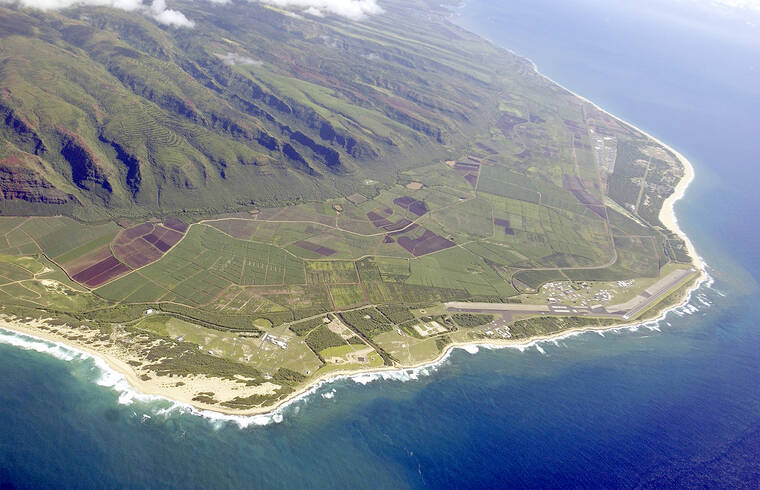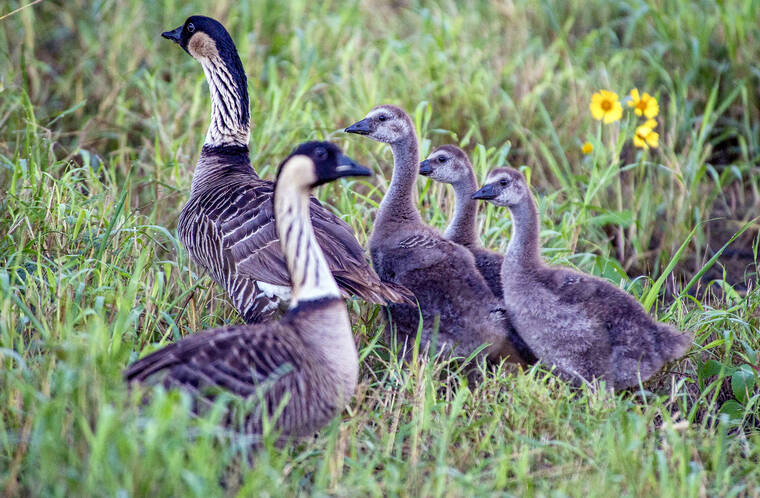MANA — Navy Petty Officer 1st Class Louis Lea of the Pacific Missile Range Facility at Barking Sands said there has been a significant comeback of the nene through the help of statewide conservation efforts. PMRF has documented as many as 637 individual nene.
“The nene is federally protected under the Endangered Species Act,” said Daniela Casillas, a biologist for the Research Corporation of the University of Hawai‘i.
“Our mission is to facilitate the nene population’s co-existence with Navy activities where safe and manageable. Our goal is to monitor and protect the nene on-base from predators and to contribute data to our partners and regulatory agencies to better understand the population recovery and challenges.”
Lea said as new infrastructure and predators were introduced to the Hawaiian Islands, the population of nene reached an extreme low of approximately 30 birds during the 1950s, according to the U.S. Department of Fish and Wildlife.
“One of the reasons we see so many nene on base is the lack of predators,” Casillas said. “One potential predator for the birds on the other islands is an invasive species of mongoose which, thankfully, is not present on Kaua‘i.”
Nene often make their nests away from humans, and the wide open fields, tree lines and areas with low levels of traffic at PMRF make the base in inviting home to the nene.
Good Samaritan hazing is one method of the Natural Resources team uses to ensure the nene have a safe, habitable environment. When hazing nene, Casillas simply walks near the birds, guiding them away from hazardous areas, such as roadways.
“The goal of using hazing techniques is not for the birds to leave entirely, but for them to choose nesting locations away from operational areas that could be harmful for the birds, or to personnel,” Lea said.
Sweep is a nene hazing dog, who is a member of the United State Department of Agriculture, and is responsible for all hazing efforts other than good Samaritan hazing. Sweep utilizes hazing techniques to encourage nene to make their homes away from the airfield and ensuring the safety of nene, goslings, eggs and nests.
Casillas and her team rove around the base, always on the lookout for nene not previously sighted in the area, as well as for new nests and eggs laid during the breeding season from October to March. Documentation and reporting of these sightings to agencies help paint a better picture of how the nene population is changing year after year.
Currently, Casillas and her RCUH team’s census on base include at least 76 nesting adults that hatched 81 eggs with 35 of the goslings already identified.
“Another reason we rove is to look for sick or injured nene,” Casillas said. “We are required to report these sightings to the Hawai‘i Division of Forestry and Wildlife, and the U.S. Fish and Wildlife Service so that we can have the birds put into a rehabilitation program.”
Casillas encourages everyone to join in the effort of protecting these creatures by admiring them from a distance, and driving slowly when the birds are near the roadways.
For more information about PMRF’s environmental program, please contact PMRFPublicAffairs@us.navy.mil, or visit https://cnrh.cnic.navy.mil/Installations/PMRF-Barking-Sands/.




Wonderful article and news. Thank you for writing, Dennis.